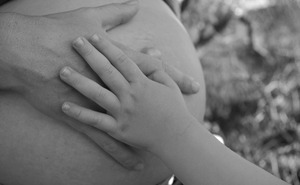Also known as the Flemish Hound, the Bloodhound is an affectionate and gentle breed. But how do you know whether you are ready to purchase a pet and if this breed is right for you? This information is absolutely necessary in making the decision to purchase a pet.
History
The origin of the Bloodhound can be traced back over 1,000 years ago to ancient Belgium. Enthusiasts believe the Bloodhound to be among the oldest of all breeds, though this has never been proven scientifically or otherwise.
Throughout its history, the Bloodhound has been most commonly used for scenting, hunting, treeing, police work, search and rescue, and as a companion, proving its superior abilities to work while providing friendship.
The Bloodhound was imported to England during the 12th century. While the exact history of the Bloodhound’s introduction to the United States has not been well documented, the breed was among the first to gain full recognition from the American Kennel Club.
Today, the Bloodhound has attained a world wide popularity due to its sense of smell and sweet personality.
Personality Traits
Best known for its sweet and gentle nature, the Bloodhound thrives on strong and dependable relationships from humans. This breed is highly intelligent and generally easy to train. As a pet, the Bloodhound is obedient, loyal, loving, and affectionate. These dogs are very active and enjoy spending time outdoors, swimming, and playing games such as fetch.
Train-ability
Due to its need for human attention and eagerness to please and impress its owner, the Bloodhound generally responds well to basic training and commands. This breed is very bright and has the ability to learn to perform most any task its trainer is willing to take the time to teach.
Establishing immediate trust and respect is key to successfully training the Bloodhound. These dogs can be somewhat sensitive to criticism and respond best to positive reinforcement and reward-based training.
Benefits and Disadvantages of the Breed
There are many benefits to owning a Bloodhound, such as its no hassle, low maintenance coat. This active breed is often quite amusing and entertaining to watch while at play. The Bloodhound is highly intelligent, easily trainable, and capable of learning to perform many impressive tricks and tasks. When properly socialized from a young age, the Bloodhound gets along well with children and other pets, often making friends quickly, and known for its gentle approach to small children. These dogs are very alert, have an amazing sense of smell, making excellent watch dogs, announcing the arrival or guests and unwanted visitors. The Bloodhound is obedient, loyal, loving, and affectionate, making a nice family pet and companion alike.
Unfortunately, there are also disadvantages to owning a Bloodhound. This energetic and adventurous breed requires large amounts of daily exercise and room to run and play. Anyone wishing to purchase this breed lacking the adequate amount of time and space to dedicate to the dog is strongly advised against doing so. A Bloodhound not receiving the proper amount of exercise and space will often act out by destroying property, chewing, digging, barking, whining, and ignoring basic training such as housebreaking.
The Bloodhound has a strong instinct to hunt and will occasionally indulge in a good chase. When on the run, these dogs are surprisingly quick, and may pose a threat to other animals, neighborhood pets, and small woodland creatures. The Bloodhound must be leashed or properly secured at all times when outdoors.
This breed’s sensitive nose can often get the Bloodhound in trouble. When chasing a scent, the Bloodhound may jump out doors, be disruptive in vehicles, and even tear open bags of trash. These dogs must be properly trained and supervised at all times.
Common Health Concerns
While the Bloodhound is typically known as a healthy and hearty breed, they do suffer from a few health problems, including: hip dysplasia, patellar luxation – dislocation of the knee, entropian – folding inward of the eye lid, ectropian – folding outward of the eye lid, sensitivity to anesthesia, obesity, and bloat.
Now that you know all about the breed, do you think you are ready to own a Bloodhound? Remember, purchasing a pet is a big decision and should be discussed thoroughly and seriously with your entire family.
Sources:
http://www.akc.org/breeds/bloodhound
http://www.trainpetdog.com/bloodhound



